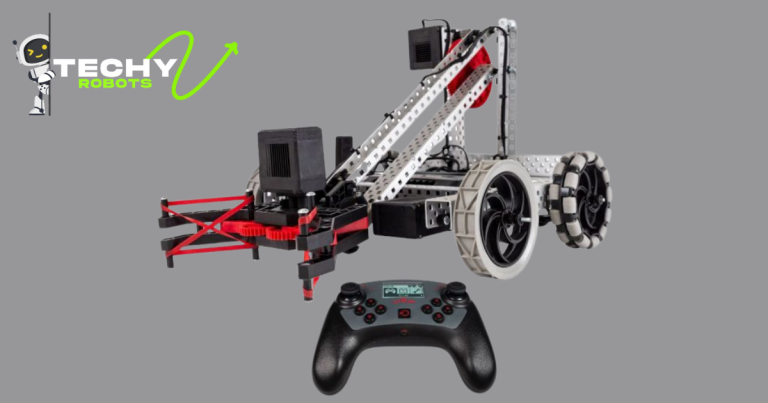The NVIDIA NVS 310 is a professional pics card designed for enterprise programs. It gives sturdy performance and reliability for multi-show setups, making it preferred for workstations that manage workplace applications, economic trading, and other records-in-depth tasks.
This manual blog diverse factors of the NVS 310, such as setup, driving force updates, compatibility, reviews, and a contrast with the NVS 510.
Installation Guide for NVIDIA NVS 310
1. Preparation:
- Turn off your laptop: Before installing the NVS 310, ensure your computer is powered off and unplugged.
- Open the case: Use a screwdriver to open the computer case. Typically, this involves eliminating screws at the facet or lower back panel.
- Discharge static electricity: Touch a metallic part of the case to discharge any static strength out of your frame to avoid adverse components.
2. Remove the Old Graphics Card (if necessary):
- Locate the contemporary pictures card: If you change a current card, locate it on the motherboard.
- Unplug the energy connectors: Disconnect any power cables connected to the antique card.
- Remove the card: Unscrew the bracket, preserving the cardboard, and lightly pull it out of the PCIe slot.
- Three. Install the NVS 310:
- Insert the cardboard: Align the NVS 310 with the PCIe slot and press down firmly till it’s miles seated.
- Secure the card: Screw the bracket into the location to stable the cardboard to the case.
- Connect strength cables: Attach cables from the power supply to the cardboard.
4. Close the Case and Boot Up:
- Close the computer case: Replace the facet panel and steady it with screws.
- Please plug in and energy up: Reconnect all cables on your PC and turn it on.
5. Install Drivers:
- Download drivers: Visit the NVIDIA website to download the state-of-the-art drivers for the NVS 310.
- Install drivers: Run the downloaded installer and comply with the on-display commands to finish the setup.
- Restart your computer: Once the setup is complete, restart your computer to use the modifications.
NVS 310 Driver Updates
Keeping your picture card drivers up to date is essential for top-of-the-line performance and compatibility with new software programs. Here’s how to update your NVS 310 drivers:
1. Visit the NVIDIA Website:
- Go to the NVIDIA Driver Download web page.
2. Enter Your Graphics Card Information:
- Select “Quadro” because of the product type.
- Choose “NVS Series” as the product collection.
- Select “NVS 310” as the product.
- Choose your working device.
- Click “Search.”
3. Download and Install:
- Download the modern motive force to be had.
- Run the installer and comply with the activations to put in the driver.
- Restart your PC to complete the installation.
4. Use NVIDIA GeForce Experience:
- Alternatively, you could use the NVIDIA GeForce Experience software program, which mechanically checks for motive force updates and installs them.
NVS 310 Compatibility
The NVS 310 is designed to be well-matched with various structures and setups, but ensuring your hardware and software program surroundings support this card is essential. Here are a few key compatibility concerns:
1. System Requirements:
- PCIe Slot: Ensure your motherboard has an unfastened PCIe x16 slot.
- Power Supply: The NVS 310 uses a low power of 19. 5W, so a fashionable electricity supply unit (PSU) must suffice. Ensure your PSU has a minimum 300W capacity.
- Operating System: Compatible with Windows (7, eight, 10) and Linux. Check the NVIDIA website for unique model aids.
2. Display Outputs:
- Ports: The NVS 310 features two DisplayPort 1.2 outputs. Ensure your video display units support DisplayPort or use appropriate adapters (e.g., DisplayPort to HDMI, DVI, or VGA).
- Multi-Display Support: Supports up to 2 video display units with a maximum resolution of 2560×1600 each. Ensure your setup can accommodate this configuration.
3. Software Compatibility:
- The NVS 310 is optimized for commercial enterprise packages, such as office suites, economic buying and selling platforms, and other productivity software. It may not be appropriate for annoying three-D packages or cutting-edge gaming.
NVS 310 Review
The NVIDIA NVS 310 is widely seen as a dependable and green photograph card for professional environments. Here are a few highlights from diverse critiques:
1. Performance:
- Business Applications: The NVS 310 excels at handling 2D programs and multi-display setups. It provides easy overall performance for office obligations, financial buying and selling, and different information-driven packages.
- Low Power Consumption: With a TDP of 19.5W, the NVS 310 is power-efficient, making it ideal for workstations that run for prolonged durations.
2. Features:
- Multi-Display Capability: Supports up to 2 monitors, enhancing productiveness by allowing customers to multitask successfully.
- NVIDIA Mosaic Technology: Enables seamless multi-display setups, creating a unified workspace throughout more than one screen.
- CUDA Cores: Equipped with 48 CUDA cores, offering decent computational power for parallel processing responsibilities.
3. Build and Design:
- Compact Form Factor: The NVS 310’s low-profile design effortlessly fits small shape aspects (SFF) and trendy laptop instances.
- Cooling Solution: Features a passive cooling device (heatsink), ensuring silent operation without enthusiasts.
4. Value for Money:
Affordable: The NVS 310 is priced competitively, imparting precise value for commercial enterprise customers who want a reliable multi-show guide without breaking the financial institution.
NVIDIA NVS 310 vs. NVS 510
Comparing the NVS 310 and NVS 510 lets you recognize which card is suited to your needs.
1. Performance:
- CUDA Cores: The NVS 310 has 48 CUDA cores, while the NVS 510 functions with 192 CUDA cores, offering appreciably better parallel processing strength.
- Memory: Both cards have 1GB of DDR3 memory; however, the NVS 510’s better middle memory offers an edge in overall performance.
2. Display Outputs:
- NVS 310: Two DisplayPort 1.2 outputs.
- NVS 510: Four mini DisplayPort 1.2 outputs, supporting as many as 4 monitors with a resolution of 3840×2160 every. This makes the NVS 510 a superior desire for multi-display setups.
3. Power Consumption:
- NVS 310: Consumes 19.5W.
- NVS 510: Consumes slightly greater at 33W but offers superior overall performance and extra display outputs.
4. Use Cases:
- NVS 310: Ideal for fashionable commercial enterprise packages, twin-monitor setups, and environments where low-strength consumption is a priority.
- NVS 510 is better suited for more traumatic expert packages, 3D rendering, and multi-screen setups requiring higher resolutions and greater presentations.
5. Price:
- NVS 310: More cheap, making it a price-powerful answer for simple business needs.
- NVS 510: Higher rate point, with advanced overall performance and extra functions.
FAQs
Can the NVS 310 deal with gaming?
The NVS 310 is not designed for gaming. It is optimized for enterprise programs and multi-show setups. A GeForce series card could be more suitable for gaming.
How do I join more than one monitor to the NVS 310?
The NVS 310 has two DisplayPort 1.2 outputs. Using DisplayPort cables or adapters, you can connect up to 2 video display units at once to HDMI, DVI, or VGA inputs.
Is the NVS 310 well suited to macOS?
The NVS 310 is commonly designed for Windows and Linux operating systems. While it would work with macOS using 0.33-party drivers, legitimate guides are limited.
Can I use the NVS 310 in a server environment?
The NVS 310 can be used in server environments for duties requiring graphical output or remote computing device periods. Its low energy consumption and passive cooling make it a suitable choice.
What is the assurance length for the NVS 310?
NVIDIA normally offers a three-year guarantee for its professional photo cards, including the NVS 310. Check with the store or producer for particular warranty information.
Conclusion
The NVIDIA NVS 310 is a versatile and reliable photo card for commercial enterprise and professional use. Its low strength intake, multi-display help, and solid performance for 2D packages make it an incredible desire for workstations.
By keeping your drivers up to date and ensuring compatibility with your device, you can maximize the benefits of the NVS 310. The NVS 510 gives superior performance and additional capabilities for more demanding programs or multi-reveal setups.




